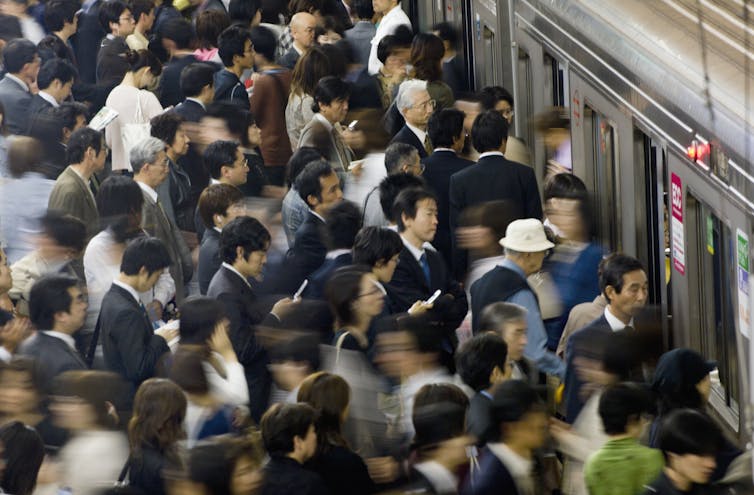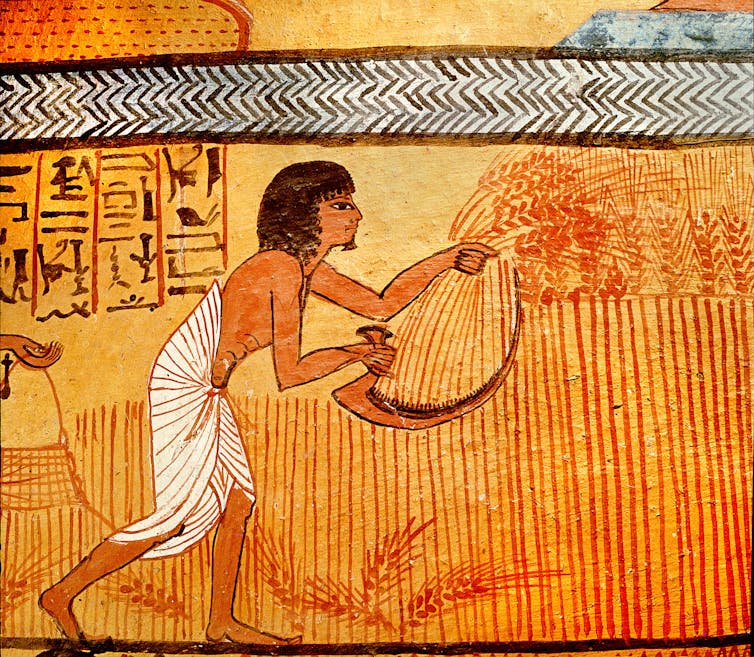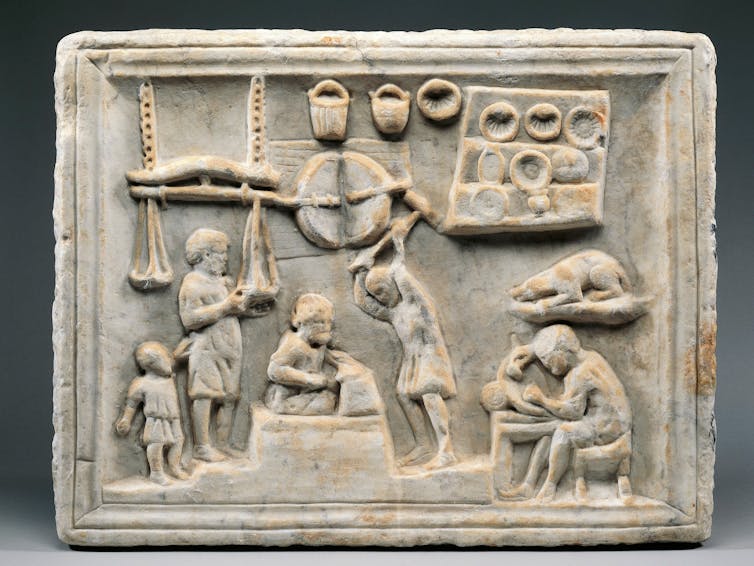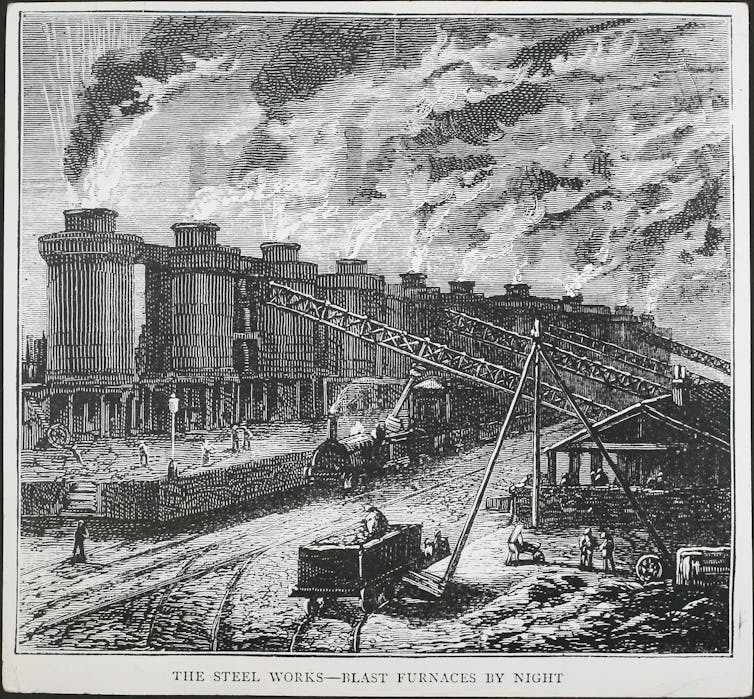8 billion humans: How population growth and climate change are connected as the ‘Anthropocene engine’ transforms the planet

By Manfred Laubichler, Arizona State University
At first glance, the connections between the world’s growing population and climate change seem obvious. The more people we have on this planet, the larger their collective impact on the climate.
However, a closer look with a longer time horizon reveals relationships between population size and climate change that can help us better understand both humanity’s predicament as the global population nears 8 billion people – a milestone the United Nations expects the world to hit on about Nov. 15, 2022.
Looking back to the Stone Age
For much of human evolution, our ancestors were exposed to large climatic fluctuations between ice ages and intermittent warmer periods. The last of these ice ages ended about 10,000 years ago.
Before the ice sheets melted, sea levels were about 400 feet (120 meters) lower than today. That allowed humans to migrate around the world. Everywhere they went, our ancestors reshaped landscapes, first by clearing forests and then through early agricultural practices that emerged in a number of regions starting just as the last ice age ended.
Paleoclimatologist William Ruddiman has suggested that these early actions – cutting down trees and expanding farming – caused a small initial rise in carbon dioxide in the atmosphere. That contributed to a stable climate over the past 10,000 years by counteracting trends of declining carbon dioxide levels that might have triggered another glaciation event.

By reshaping landscapes, our ancestors actively constructed the niches they inhabited. This process is an important aspect of evolutionary change, creating important feedback dynamics between evolving species and their environment.
As humans evolved, the demands of the growing population, associated knowledge creation and energy use created a feedback cycle my colleagues and I call the Anthropocene engine. That engine has transformed the planet.
Revving up the Anthropocene engine
The Anthropocene engine has been running for at least 8,000 years. It led to the rise of modern civilizations and ultimately to the environmental challenges we face today, including climate change.
How does the Anthropocene engine work?
First, populations had to reach a critical number of people to successfully create enough knowledge about their environments that they could begin to actively and purposefully transform the niches they lived in.
Successful agriculture was the product of such knowledge. In turn, agriculture increased the amount of energy available to these early societies.

More energy supports more people. More people led to early settlements and, later, to cities. This allowed for task specialization and division of labor, which, in turn, accelerated the creation of more knowledge, which increased available energy and allowed population size to grow as well. And so on, and so on.
While the details of this process differ around the world, they are all driven by the same Anthropocene engine.
The problem of exponential growth
As an evolutionary biologist and historian of science, I have studied the evolution of knowledge and complexity for over three decades and have been developing mathematical models with colleagues to help explain these processes. Using the universality of the underlying processes driving the Anthropocene engine, we can capture these dynamics in the form of a growth equation, which includes links between population growth and increasing energy use.
One consequence of positive feedback cycles in dynamical systems is that they lead to exponential growth.
Exponential growth can start very slowly and be barely noticeable for quite some time. But eventually it will have dramatic consequences wherever resources are limited.
Driven by the Anthropocene engine, human population has grown exponentially, and individual societies have approached collapse multiple times over the past 8,000 years. The disappearance of the Easter Island civilization and the collapse of the Mayan empire, for example, have been linked to the depletion of environmental resources as populations rose. The dramatic decline of the European population during the Black Death in the 1300s was a direct consequence of crowded and unsanitary living conditions that facilitated the spread of Yersenia pestis, or plague.
Biologist Paul Ehrlich warned about unchecked growth in his 1968 book “The Population Bomb,” predicting growing global demand for limited resources would lead to societal collapse without changes in human consumption.
But globally, humanity has always found a way to avoid doom. Knowledge-based innovations, such as the Green Revolution – the broad-scale effects of which Ehrlich did not foresee – have enabled people to reset the clock, leading to more cycles of innovation and (almost) collapse.

One example is the sequence of energy regimes. It started with wood and animal power. Then came coal, oil and gas.
Fossil fuels powered the Industrial Revolution, and with it, greater wealth and advances in health care. But the age of fossil fuels has had dramatic consequences. It almost doubled the concentration of carbon dioxide in the atmosphere in less than 300 years, causing the unprecedented speed of global warming that humanity is experiencing today.
At the same time, inequality has become endemic. Poorer nations that contributed little to climate change are suffering the most from global warming, while just 20 wealthier countries are responsible for about 80% of emissions.
The next energy transition to avoid collapse is underway now with the rise of renewable energy sources like wind and solar power. But studies – including a report released ahead of the 2022 U.N. Climate Change Conference in November – show humans aren’t evolving their energy use fast enough to keep climate change in check.
Using knowledge to reset the cycle again
Every species, if left unchecked, would grow exponentially. But species are subject to constraints – or negative feedback mechanisms – such as predators and limited food supplies.
The Anthropocene engine has allowed humans to emancipate ourselves from many of the negative feedback mechanisms that otherwise would have kept the population’s growth in check. We intensified food production, developed trade among regions and discovered medications to survive diseases.
Where does this leave humanity now? Are we approaching inevitable collapse from climate change of our own making, or can we transition again and discover innovations that reset the cycle?
Introducing negative feedback into our socioeconomic-technical systems – not as radical population control or war, but in the form of norms, values and regulations on excess greenhouse gas emissions – can help keep climate change in check.
Humanity can use knowledge to keep itself within its environmental boundaries.![]()
Manfred Laubichler, Global Futures Professor and President’s Professor of Theoretical Biology and History of Biology, Arizona State University
This article is republished from The Conversation under a Creative Commons license. Read the original article.



